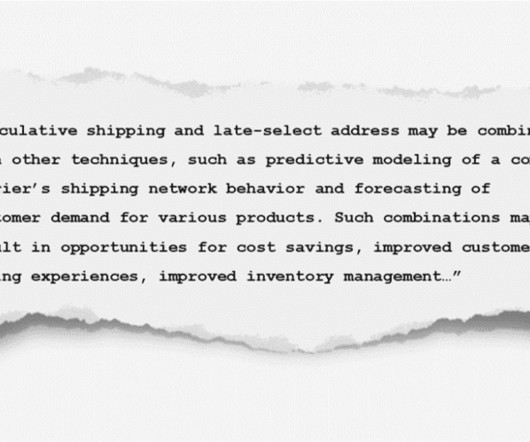Infor Analyst Innovation Summit 2025: A Look at the Future of Industry Cloud
Logistics Viewpoints
MAY 1, 2025
Examples of automatable processes include Invoice Processing, Sales Order Entry, and Customer Account Creation. Overall, the executive-led sessions provided a comprehensive look at Infors strategy to deliver value through its industry-specific cloud platform and integrated advanced technologies. Infors strategy is clear.









































Let's personalize your content